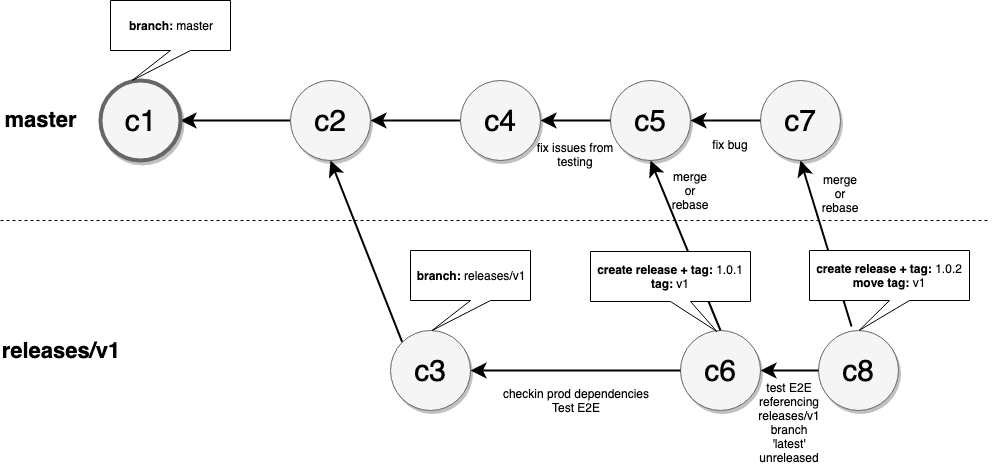3.1 KiB
Versioning
Actions are downloaded and run from the GitHub graph of repos. The workflow references an action use a ref.
Examples:
steps:
- uses: actions/javascript-action@v1 # recommended. starter workflows use this
- user: actions/javascript-action@v1.0.0 # if an action offers specific releases
- uses: actions/javascript-action@41775a4 # binding to a specific sha
Compatibility
Binding to a major version is the latest of that major version ( e.g. v1 == "1.*" )
Major versions should guarentee compatibility. A major version can add net new capabilities but should not break existing input compatibility or break existing workflows.
Major version binding allows you to take advantage of bug fixes and critical functionality and security fixes. The master branch has latest code and is unstable to bind to since a breaking new major version may first get implemented in master.
Warning: do not reference
mastersince that is
steps:
- uses: actions/javascript-action@master # do not do this
Binding to the immutable sha1 may offer more reliability. However, note that the hosted images toolsets (e.g. ubuntu-latest) move forward and if there is a tool breaking issue, actions may react with a patch to a major version to compensate so binding to a specific sha may prevent you from getting fixes.
Recommendation: bind to major versions to get functionality and fixes but reserve binding to a specific release or sha as a mitigation strategy for unforseen breaks.
Recommendations
-
Create a release branch for each major version: For example,
releases\v1. This will allow for releases of that major major while development of a different major version proceeds. -
Validate changes referencing the release branch:
steps:
- uses: actions/sample-action@releases/v1
-
Create a GitHub release for each specific version: Creating a release like v1.0.0 allows users to bind back to a specific version if an issue is encoutered with the latest major version.
-
Release that version by updating the major version tag: Move the major version tag (v1, v2, etc.) to point to the ref of the current release. This will act as the stable release for that major version. You should keep this tag updated to the most recent stable minor/patch release.
git checkout releases/v1
git tag -fa v1 -m "Update v1 tag"
git push origin v1 --force
This will results in a major version tag and the latest specific version pointing to the same sha. See javascript-action tags as an example.
- Compatibility Breaks: introduce a new major version branch (releases/v2) and tag (v2) if changes will break existing workflows. For example, changing inputs.
Sample Workflow
This illustrates one possible versioning workflow which the walk through covered.
